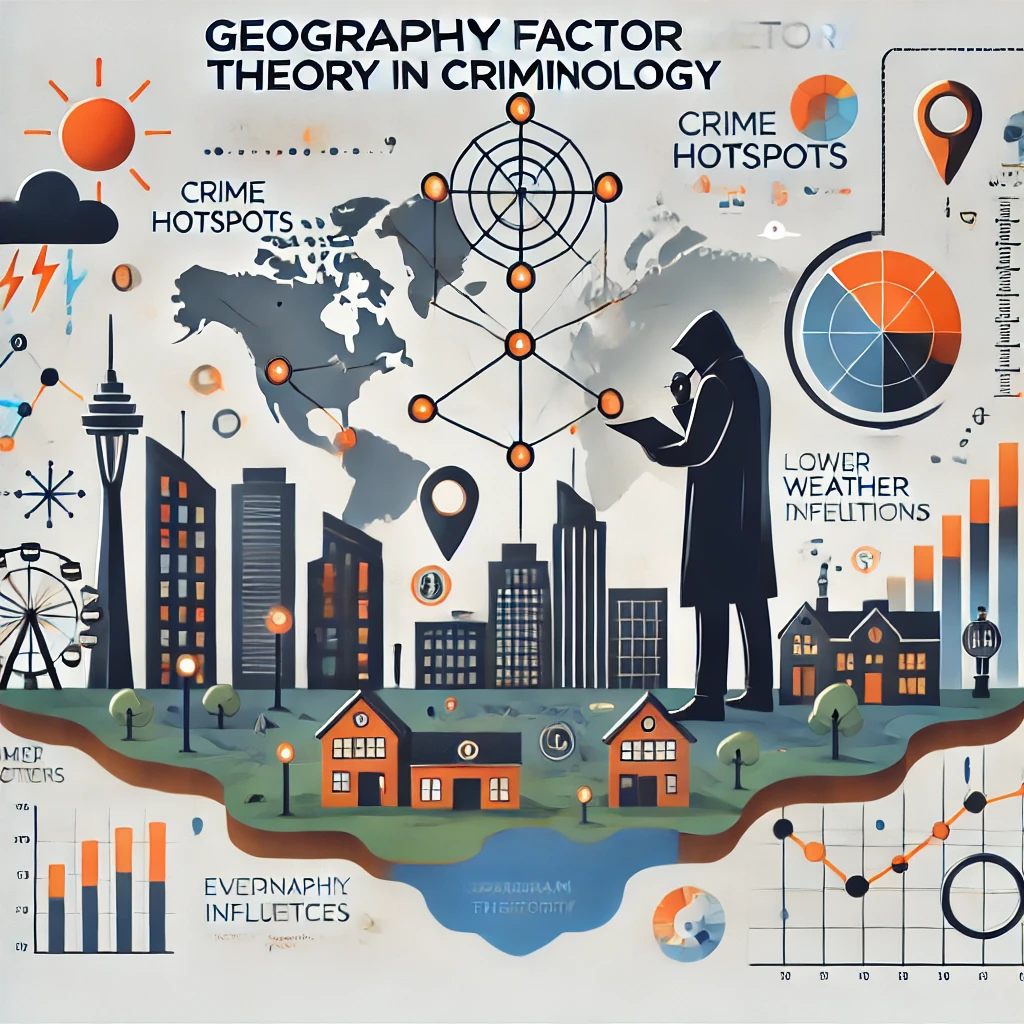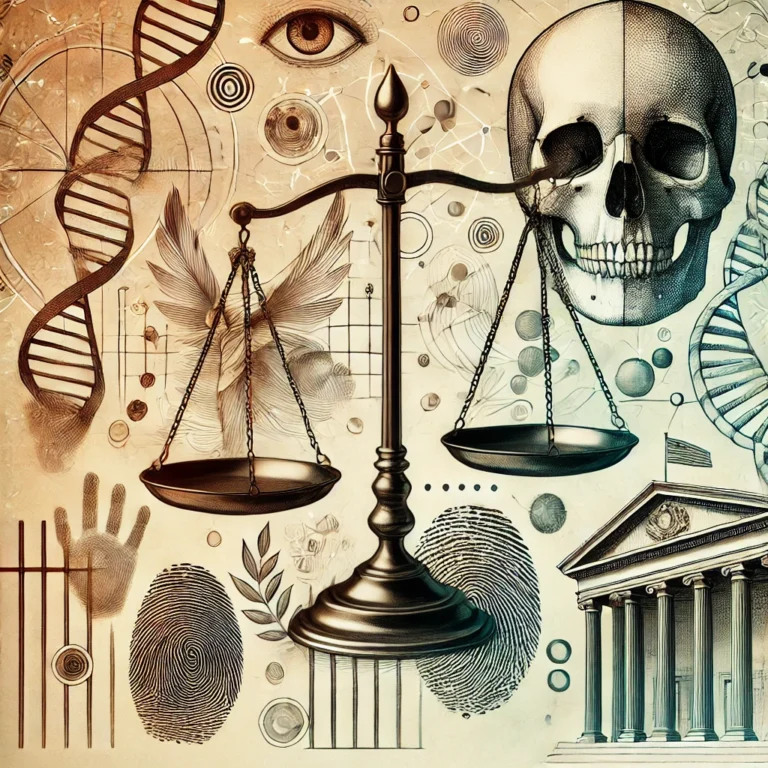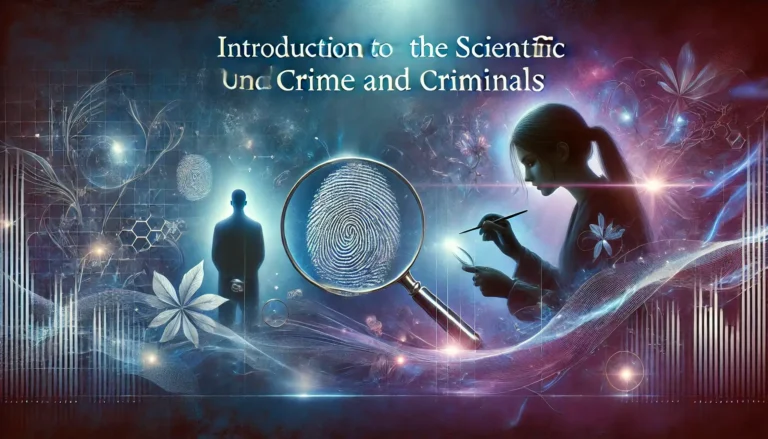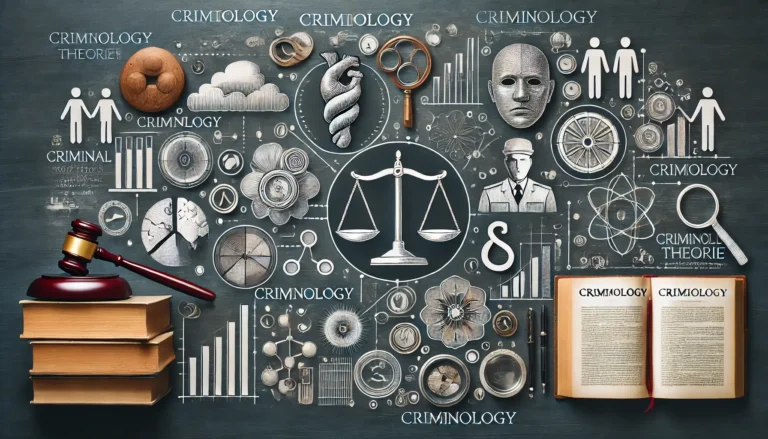Geographical Factor Theory in Criminology
Introduction
The geographical factor theory in criminology posits that environmental and geographical factors significantly influence criminal behavior. These factors encompass natural environments, societal structures, and even physiological aspects shaped by geographical location. Throughout history, criminologists have explored how different geographical regions affect crime rates, highlighting natural, social, and physiological aspects of the environment as key influencers of criminal behavior. This article will delve into three primary theories: the natural theory, the social theory, and the physiological theory, each of which offers a unique lens through which to examine the role of geography in shaping crime.
First: The Natural Theory of Crime
The natural theory of crime is rooted in the belief that physical geography and environmental conditions play a crucial role in the development of criminal behavior. These conditions are primarily concerned with the climate, terrain, and the natural resources available in a particular region. According to this theory, certain geographical features can encourage or discourage criminal activity.
1. The Role of Climate and Weather
One of the most discussed aspects of the natural theory is the influence of climate on human behavior. It is commonly believed that extreme weather conditions, whether too hot or cold, can lead to higher aggression and a propensity for violence. For example, in regions with scorching heat, such as deserts or areas with high temperatures, people may experience increased irritability, leading to impulsive and violent actions. Similarly, cold climates, especially in areas where people experience long winters, may also influence social behaviors and contribute to isolation, which can affect crime rates.
2. Impact of Terrain and Geography
The terrain also plays a crucial role in criminal behavior. For instance, mountainous areas or remote regions may offer natural havens for criminal activity, as the challenging terrain makes it difficult for law enforcement to pursue criminals or control illegal activity. Additionally, the accessibility of these areas may make them ideal locations for illicit activities such as drug trafficking, human trafficking, and organized crime.
3. Natural Disasters and Crime Waves
Natural disasters, such as earthquakes, floods, and hurricanes, often lead to spikes in criminal behavior. These disasters disrupt communities, create economic instability, and break down the social order, providing opportunities for looting, violence, and other criminal activities. A lack of resources, combined with a heightened sense of survival, can push individuals toward unlawful acts as a means of coping with crisis situations.
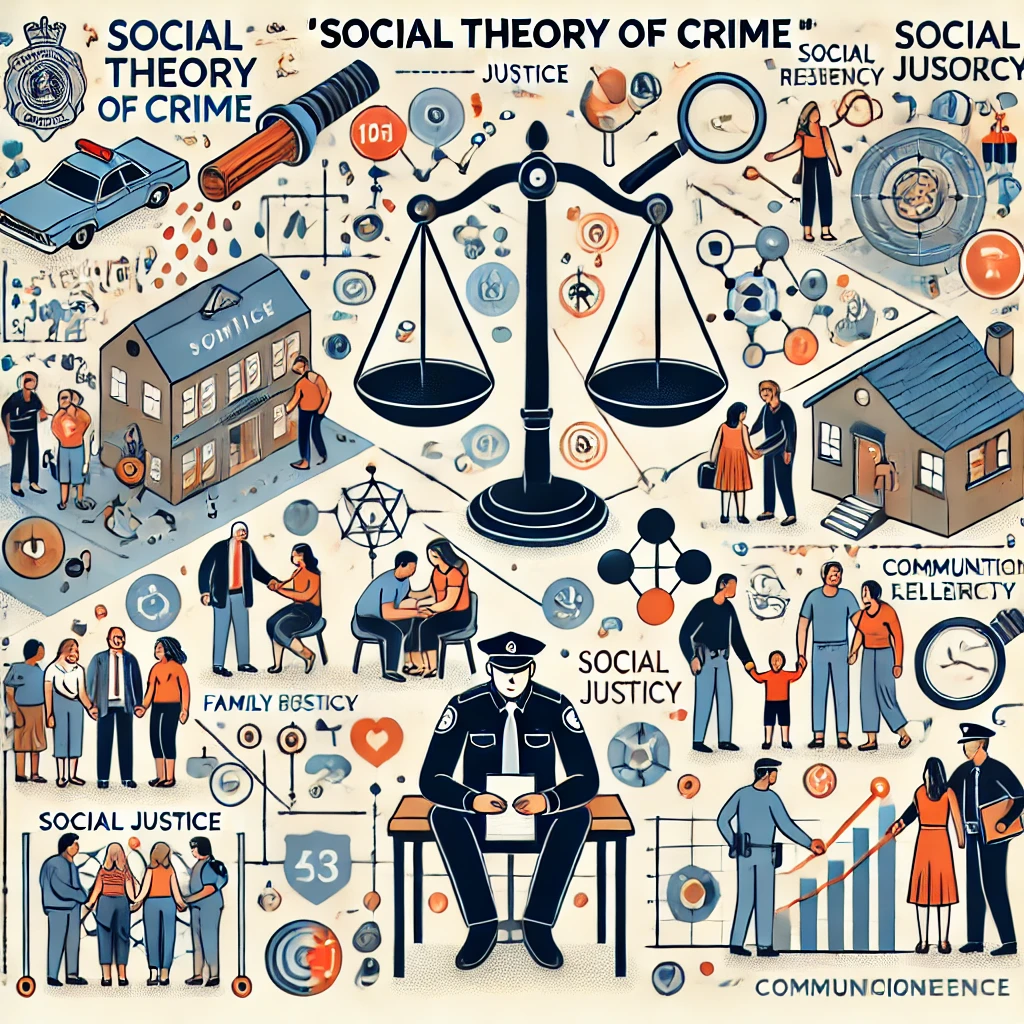
Second: The Social Theory of Crime
The social theory emphasizes the relationship between geography and social structures, arguing that crime is largely a product of the social environment in which individuals live. The social environment—shaped by urbanization, poverty, inequality, and social disorganization—creates conditions that facilitate criminal behavior. From a geographical standpoint, urban areas, especially those with high population density and socioeconomic disparities, have been shown to experience higher crime rates.
1. Urbanization and Crime Rates
Urbanization is one of the most prominent factors associated with social theories of crime. As cities expand and become more densely populated, social control mechanisms often weaken. The anonymity afforded by large urban spaces allows individuals to engage in criminal activities without fear of immediate detection or punishment. For example, metropolitan areas tend to have higher rates of theft, gang violence, and drug-related crimes due to the complex social dynamics, economic disparities, and the disintegration of traditional community bonds.
2. Social Inequality and Crime
Geographical areas that experience high levels of poverty, unemployment, and income inequality are more likely to exhibit elevated crime rates. In communities where individuals face limited access to resources, education, and healthcare, there is a greater likelihood of individuals resorting to criminal behavior to fulfill their needs. Areas marked by extreme wealth disparity often see crime rates increase as individuals from disadvantaged backgrounds seek to equalize their position through illicit means.
3. Social Disorganization Theory
The social disorganization theory, developed by sociologists like Shaw and McKay, suggests that crime is more likely to occur in neighborhoods with weakened social structures, such as broken families, lack of social cohesion, and low levels of community engagement. These areas often experience rapid turnover of residents, which disrupts the formation of strong social bonds and a collective sense of responsibility. These conditions are frequently found in inner-city areas, where socioeconomic instability fosters criminal behavior.
4. Influence of Proximity to Crime Hotspots
Geography also plays a role in determining whether an individual is more likely to become involved in crime, based on their proximity to crime hotspots. Neighborhoods near areas with high criminal activity often see higher rates of crime because individuals in these regions are exposed to criminal behavior and may view it as normalized. This phenomenon contributes to the cycle of criminal activity, where criminal behavior becomes entrenched in the local culture.
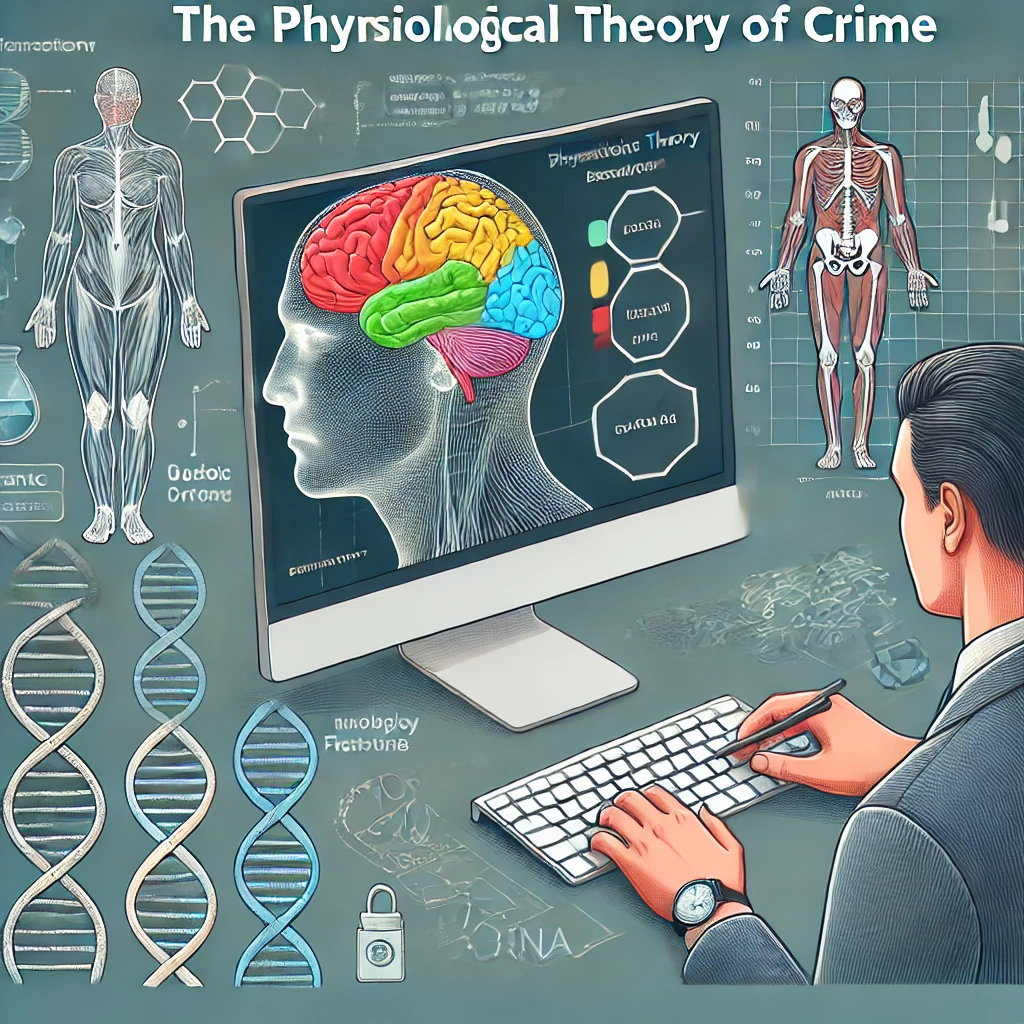
Third: The Physiological Theory of Crime
The physiological theory of crime posits that geographical environments can have a direct impact on the physiological and mental well-being of individuals, influencing their propensity to commit crime. This theory argues that certain environmental factors may trigger physiological changes in the human body, such as hormonal imbalances, that predispose individuals to criminal behavior.
1. Environmental Stressors and Mental Health
Geographical regions with harsh environmental conditions can contribute to mental health challenges, such as stress, anxiety, and depression, which can, in turn, influence criminal behavior. For instance, individuals living in areas with high levels of pollution, noise, or other environmental stressors may experience heightened levels of aggression or psychological distress. These conditions can create a fertile ground for violent or antisocial behavior.
2. Influence of Polluted Environments
Research has shown that environmental pollution, particularly in industrialized areas, can lead to higher levels of stress and cognitive decline, which may contribute to criminal activity. Long-term exposure to environmental pollutants, such as heavy metals or toxic chemicals, has been linked to neurological damage and behavioral changes, including increased impulsivity and aggression, which may manifest in criminal actions.
3. Geographical Factors in Neurodevelopment
Certain regions may influence brain development and mental health in early childhood. For instance, children growing up in polluted or impoverished areas may face challenges such as poor nutrition, limited access to healthcare, and exposure to environmental toxins, all of which can impair cognitive function and emotional regulation. These factors can increase the likelihood of engaging in criminal behavior later in life.
Conclusion
The geographical factor theory in criminology offers a broad and nuanced understanding of how different environmental conditions can influence criminal behavior. Whether through the lens of natural, social, or physiological influences, it becomes clear that geography plays a significant role in shaping the experiences and behaviors of individuals. The natural theory highlights the impact of climate and terrain on aggression and survival instincts, while the social theory emphasizes how urbanization, inequality, and social disorganization contribute to crime. Meanwhile, the physiological theory underscores the role of environmental stressors and pollution in affecting mental health and criminal tendencies.
A deeper exploration of these theories allows us to understand that crime is not solely the result of individual choice but is deeply intertwined with the environment in which individuals live. As society continues to evolve, understanding the geographical influences on crime can help in formulating better strategies for crime prevention and social reform.

